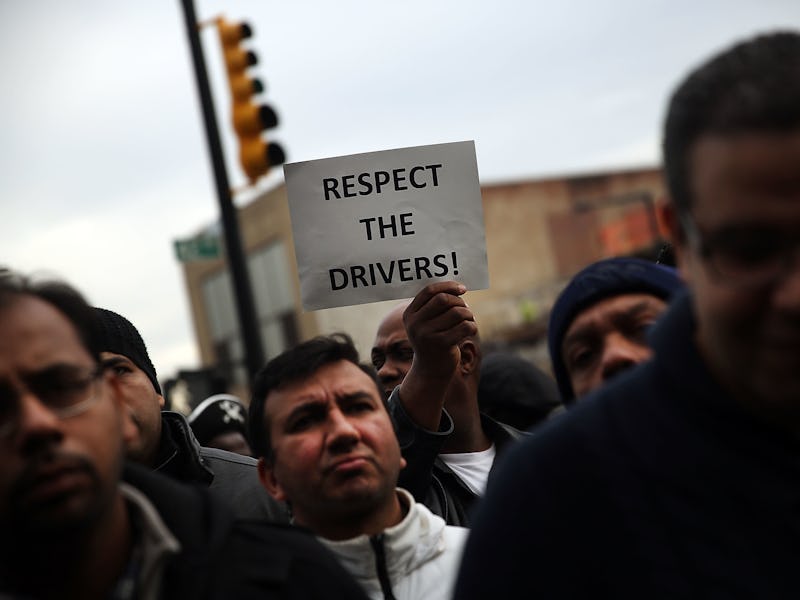Uber has had a rough 2017. There have been sexual harassment allegations and a #deleteuber campaign. A video of Travis Kalanick, the company’s CEO, arguing with a driver on Super Bowl Sunday surfaced. On Monday, a largely critical New York Times report interviewed drivers who described the various psychological plays Uber executes on drivers to nudge them into working longer hours. Below we’ve pulled out seven of the various ways reported by the Times to get drivers to work more.
1. It Uses a Netflix-Styled Nudge to Create Binge-Driving
When an Uber driver is behind the wheel, they tend to get fare after fare. This creates an endless stream of jobs for the driver, but it also discourages any kind of breathing room. When a driver feels they need a break, or even wants to end their shift, they are roped into “just one more passenger” several times, pushing them beyond their limits. It’s similar to Netflix binge-watching, when the titles continuously play, and you’re left to decide whether or not to watch just one more episode.
2. It Sends Texts, Emails, and Pop-Ups to Nag Drivers Into Driving
During rush hour or on Friday nights, “surges” have become commonplace for passengers trying to catch a ride. This is usually not because of a flux of passengers, but a shortage of drivers. And Uber pings, texts, and messages their drivers constantly to get on the road to accommodate. Drivers know that a surge tends to mean higher fare, enticing them with more money. Uber has even gone as far as to persuade their drivers to move to heavy surge areas.
3. It Experimented With a Female Persona Named “Laura” for Its Predominantly Male Drivers
Uber experimented with a digital persona named “Laura” that urged drivers — who are mostly male and also independent contractors not required to log on or clock in — to start driving.
4. It Used “Internalized Motivation” to Get New Drivers to Avoid Quitting
Drivers would get a sign-on bonus for completing 25 rides, but Uber found that if they didn’t reach the 25 mark, they would stop. So, Uber used positive reinforcement like “almost there” and “congrats!” to get drivers to that milestone. Because they are human, this messaging was internalized by drivers, coercing them to continue driving even if they’d already completed eight hours of work or more.
5. It Made It Hard to End Your Shift by Creating a Mental State Called the “Ludic Loop”
In the same wheelhouse as number one, Uber tried a similar approach by telling drivers how far they were away from earning a certain amount if they tried to tap out of the app, targeting them with arbitrary income goals. The options were “go offline” or “keep driving,” and “keep driving” was already highlighted. This merry-go-round process is called the “Ludic Loop,” in the video game world, in which players are always on the cusp of an unattainable goal. Uber even went as far as to create an engine gauge graphic with a dollar sign on one end. Although it would get close, it would never quite reach the dollar sign.
6. Drivers Earn “Badges” That Don’t Do Much
Drivers would get “badges” for their effort, including “excellent service” and “great conversation” badges that would give the driver a false sense of being rewarded for their long hours when in reality, they weren’t even making enough to put food on the table.
7. Uber’s Developing a Scheduling Tool
While the Times report points out how Uber nudges its drivers to stay behind the wheel for longer, which is helpful for Uber but not always for the drivers, the end of the reports mentions that Uber is working on something of a win-win feature. The feature would allow a driver to name a location and time they wanted to end up at and Uber would suggest fares that would put the driver in that direction. So, if a driver wanted to end his day at 8 p.m. at a specific movie theater, he could put that into the app and Uber would give him fares that would get him close that location at that time.
